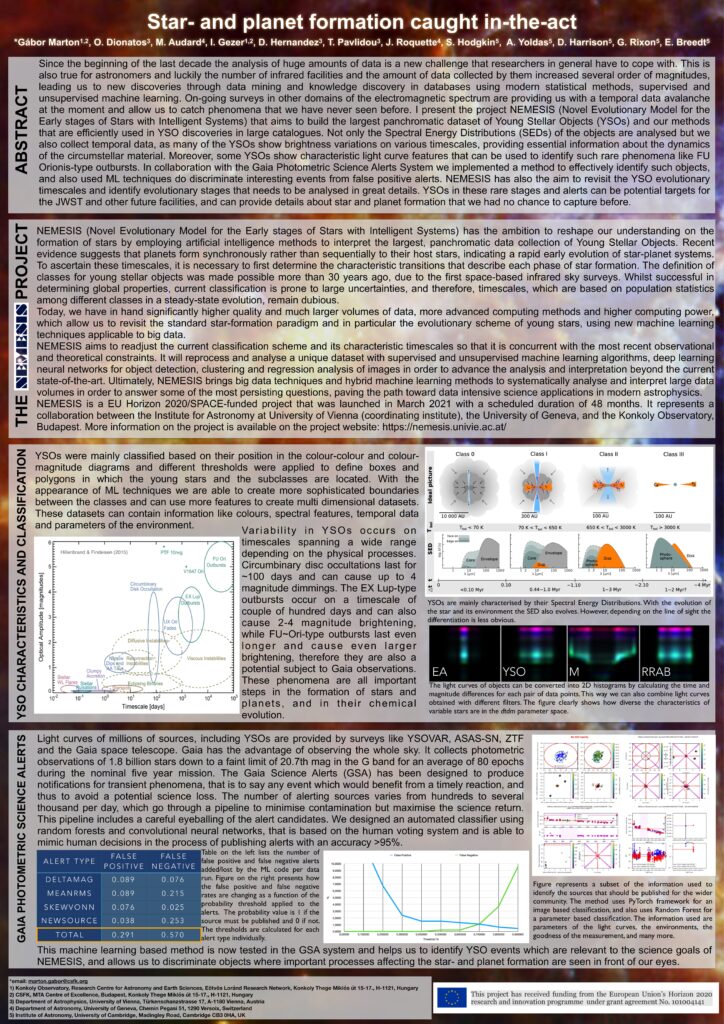
Poster: Star- and planet formation caught in-the-act
Since the beginning of the last decade the analysis of huge amounts of data is a new challenge that researchers in general have to cope with. This is also true for astronomers and luckily the number of infrared facilities and the amount of data collected by them increased several order of magnitudes, leading us to new discoveries through data mining and knowledge discovery in databases using modern statistical methods, supervised and unsupervised machine learning. On-going surveys in other domains of the electromagnetic spectrum are providing us with a temporal data avalanche at the moment and allow us to catch phenomena that we have never seen before. I present the project NEMESIS (Novel Evolutionary Model for the Early stages of Stars with Intelligent Systems) that aims to build the largest panchromatic dataset of Young Stellar Objects (YSOs) and our methods that are efficiently used in YSO discoveries in large catalogues. Not only the Spectral Energy Distributions (SEDs) of the objects are analysed but we also collect temporal data, as many of the YSOs show brightness variations on various timescales, providing essential information about the dynamics of the circumstellar material. Moreover, some YSOs show characteristic light curve features that can be used to identify such rare phenomena like FU Orionis-type outbursts. In collaboration with the Gaia Photometric Science Alerts System we implemented a method to effectively identify such objects, and also used ML techniques do discriminate interesting events from false positive alerts. NEMESIS has also the aim to revisit the YSO evolutionary timescales and identify evolutionary stages that needs to be analysed in great details. YSOs in these rare stages and alerts can be potential targets for the JWST and other future facilities, and can provide details about star and planet formation that we had no chance to capture before.
